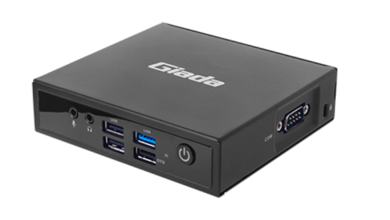Understanding Experience – Four Ways to Measure Employee Experience

Is it possible to measure employee satisfaction (EX)? What is employee experience?
EX refers to the employee’s perception of their experience at different touchpoints within a company. These touchpoints may include:
Interview/Hiring process
Onboarding
Introduction to company culture
Promotional opportunities
Professional development
Interviews for Exit
Employee experience by nature is intuitive. It changes in measurement depending on various factors and possible events. This is why experiences can now be viewed as a combination of monitoring metrics and key performance indicators (KPIs) like:
Employee satisfaction
Employee Engagement
Score of Employee Net Promoter
Productivity of employees
Refer employees to customers and potential candidates
Employee retention rates
Absenteeism among employees
Employee Wellness
The view of employee experience is more clear when you combine the metrics and touchpoints. It is possible to infer that employees have positive experiences with their work if they are happy and productive.
What is the purpose of measuring employee experience?
EX is a critical measurement. There are many reasons why it is important. EX can help you to have productive, engaged and loyal employees. You want EX to be positive if you are success-driven. This will ensure higher customer satisfaction and loyalty. It also means you have more engaged employees who work hard for customers. Managers who are revenue-driven want to reduce employee turnover, increase engagement, and keep customer acquisitions and growth revenue up. Whatever the situation, strategic growth decisions can be made by measuring and using employee experiences.
How can you measure employee experience in your company?
There are four options to help you get started!
-
Surveys
Asking your employees is the best way to get started. Employees can share their experiences with the company through an anonymous survey. This type of data, which includes open-ended questions as well as rating questions, can be used to perform advanced analytics such as Natural Language Processing (NLP), and Sentiment Analysis to help you understand what they are saying. To better understand employees’ experiences, you can offer them many surveys.
Pulse Checks– Pulse check are performed semi-annually between annual evaluations. However, they can also be done at higher frequency. It does exactly what its name implies: it monitors the pulse of employees throughout the year. It is a chance for companies to find out what they are doing well, and what can be improved.
Candidate experiences – Many candidates and employees first encounter with a company is the interview and hiring process. This survey will allow you to gather data about the impact of your first interaction with a company. This can set the tone for the company’s culture and can make the difference between high talent acquisition or low application rates.
eNPS – Most people are familiar with NPS (net promoter score) and how it indicates how loyal customers are. The same applies to employee net promoter score. This survey provides insight into the loyalty and potential engagement of employees within the organization. It covers everything from the mission and values to the provision of exceptional customer experiences.
This survey is different from eNPS. It allows you to precisely target employee engagement. Engaged employees are more productive, take more time and are more likely to go above their job description to create better experiences and customer service for peers and customers.
Exit Interviews – You would prefer to retain talented people, but sometimes things don’t work out. Exit interviews are still a powerful way to gain data. Here are candid responses about the company’s culture, management style and other details. Former employees may not fear retaliation or getting into trouble.
360-Feedback – Sometimes called performance evaluations–though there is a difference–360-degree feedback projects allow assessment and research on employee experiences, and even what experiences those employees give to others from their peers, subordinates, and managers.
This process will be successful if you have an experience management system that can compile the data and provide insight with clear reporting.
-
HR Solutions
Human Resources is a common department in every company. Although companies may not use the same technology, most have some kind of Human Resources Management System. This is for things like timekeeping and payroll. It also includes Human Resources Information Systems (HRIS) which can be used to track benefits and compensation. Human Capital Management (HCM), which is responsible for onboarding, training and performance. HRIS begins with policies and procedures. Understanding their interdependence is the first step. HCM also includes HRIS, but it adds talent management. HRMS includes HRIS elements and HCM components.
It’s not surprising that so many HR functions and systems are concerned with people within an organization. This is a great area for measuring employee experiences in these systems, or at the very least working with them.
Surveys are often used by HR to gather employee experience data. Because of the variety of sources and amounts of data they collect, HR Solutions and Technologies is a distinct piece of measuring employee experiences. These data can be linked to KPIs and monitored changes for a snapshot of employee experience.
How HR Solutions can improve the employee experience
NPS scores
Interface and User Experiences
Communication tools
Employee experience software
Mapping the employee experience
Collaboration-enabling tools
HIS
A few examples of HRIS applications that many people are familiar with include Zenefits and ADP, Oracle and SAP SuccessFactors. They also use them frequently. Self-service capabilities can add to positive experiences. They are easy to use, simple and available when employees require them. Collaboration-enabling tools like Slack, Teams, or Trello allow employees to work together more accessible while promoting communication. Experience management software often integrates with third party applications to bring these points together and produce reports that inform decisions.
-
Focus Groups
Focus groups, which are a bit more interesting than the other options, can be used to examine experiences that have been shared with specific groups in your company. Imagine that you are measuring employee engagement and satisfaction. But there are productivity problems within your department. It’s not clear why but it is beyond acceptable performance and productivity.
Focus groups are held in each department to better understand why certain employees are less productive than others. You aren’t excluding lower-producing employees, but rather allowing all to speak up.
What if you wanted to know what employees who work remotely would think about their experience compared with those at the office? You could also look at protected groups or minority groups when it comes Diversity, Equity and Inclusion practices.
These are just a few examples of situations where it might be advantageous to use focus groups.
Focus groups are a way for employees to share their experiences together. This can help others feel more comfortable sharing their own experiences. You can make it an open forum and let people talk or give them a topic and then ask questions. A third party or arbitrator could manage the focus group to remove management and ensure honest answers.
-
Take a look at Competitors
Knowing what your competitors are doing can help you make better decisions, just like in market research and SWOT analysis. The Employee Experience Index ranks 252 businesses based on three important factors related to employee experiences: workplace technology and company culture. To see how your competitors are doing, take a look at this Index. Or, you can also see the top companies in the Index to see what they could do differently.
Do you separate employee experience from its overall important factors to see where you can make the greatest impact?
Do you include the office space/location and remote work in this digital age?
This method of measuring is a comparison with nature. To get more detail, you would use the three other types.
Final Thoughts
It doesn’t matter what option you choose to use, measuring employee experiences is crucial. Higher employee experience measures mean more engaged, invested, and productive employees. This leads to increased customer satisfaction, expansion revenue and sales revenue.




